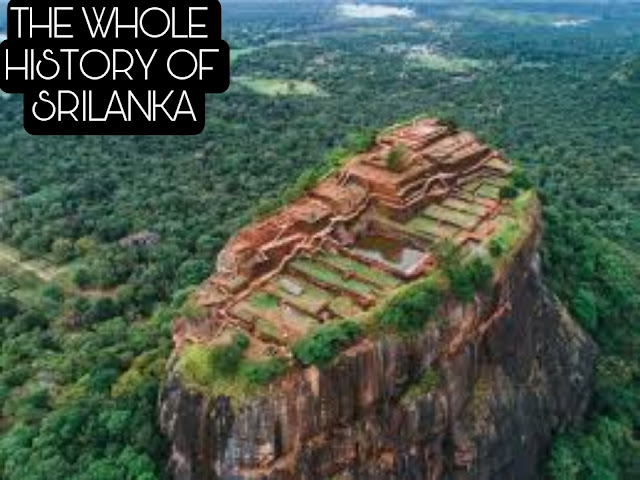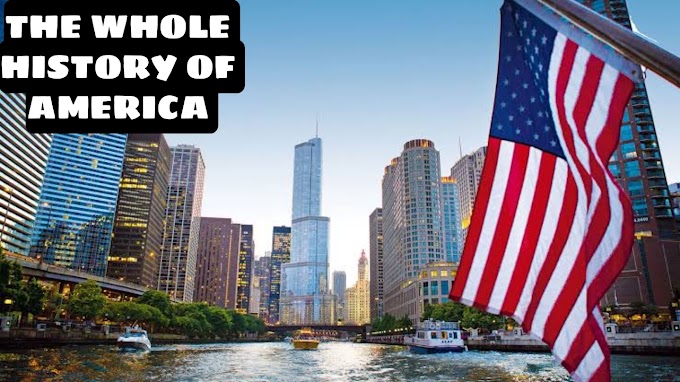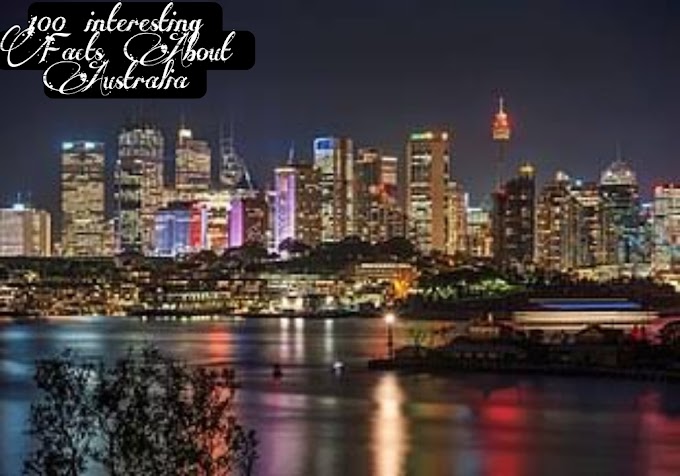THE WHOLE HISTORY OF SRILANKA
Hello Friends:
Welcome to Countries Facts so Today in this Article I will show you the whole history of Srilanka Thousands of years ago, a land bridge connected Sri Lanka to the Indian Subcontinent. The bridge, which remains to this day as a chain of limestone shoals known as Adam’s Bridge, allowed for Sri Lanka’s first inhabitants, Balangoda Man, to arrive. Balangoda Man may be the ancestors of the Vedda, an indigenous people of Sri Lanka who survive to this day. Meanwhile, agriculture developed by about 15,000 BCE. Within a few millennia, the end of the Last Glacial Period and the subsequent rising of sea levels created modern coastlines. The port of Galle emerged as a major center of the spice trade throughout the Indian Ocean in about 1400 BCE. Sri Lanka entered the Iron Age around the 9th century BCE. The major city of Anuradhapura was likely founded at this time. At some point near the middle of the 1st millennium BCE, the mysterious Naga people settled in northern Sri Lanka. In 543 BCE, the Indo-Aryan Sinhalese people migrated from India and settled in northwestern Sri Lanka under the leadership of Prince Vijaya. They established the kingdom of Tambapanni, centered in the modern-day city of Puttalam. The Sinhalese polity of Maya Rata emerged in southwestern Sri Lanka in the late 6th century BCE. In 437 BCE, Pandukabhaya, the last king of Tambapanni, moved his capital to the city of Anuradhapura. This is considered to be the start of the Anuradhapura period. The Sinhalese Ruhuna state emerged in the 3rd century BCE. Meanwhile, the main religion of the island shifted from Hinduism to Buddhism. Finally, the Dravidian Tamils began to migrate from India and settle in northern and eastern Sri Lanka; the Tamil prince Ellalan ruled Anuradhapura for a time. After ousting Ellalan and restoring Sinhalese control of Anuradhapura, King Dutugamunu brought all of Sri Lanka under his rule. In 993, the Tamil Chola dynasty of South India conquered Anuradhapura. King Mahinda V thus fled to Ruhuna. Chola subjugated the rest of Sri Lanka in 1017, taking Mahinda V back to India as a prisoner. However, Chola was unable to exercise complete control over the southern provinces. The fall of the Anuradhapura Kingdom marked the start of the Polonnaruwa period. Mahinda V’s son, Kassapa VI, plotted to take back the country from Ruhuna, but was unsuccessful. Ruhuna remained the epicenter of anti-Chola resistance; Vijayabahu I of Ruhuna proclaimed himself king in 1055 and liberated Sri Lanka in 1070, founding the Kingdom of Polonnaruwa. The old city of Polonnaruwa was chosen as the capital, though it was renamed Vijayarajapura in honor of the king. The early days of the kingdom were ridden with internal conflict; one example was the Velakkara revolt of 1084, during which Tamil mercenaries rebelled against Vijayabahu. King Parakramabahu I, who ascended the throne in 1153, brought prosperity to Polonnaruwa. He unified Sri Lanka under his rule by annexing the southern principalities, and he also enriched his kingdom by exporting valuable goods such as pearls, gems, and cinnamon. In 1215, the Tamil lord Kalinga Magha, a descendant of the Chola dynasty, usurped the throne. The Kingdom of Dambadeniya soon restored Sinhalese rule in the south, but the Tamil Jaffna Kingdom remained in the north. In between, independent Sinhalese nobles comprised the Vanni chieftaincies. The rulers of Dambadeniya secured the relic of the tooth of the Buddha. According to Sri Lankan tradition, this relic has imbued monarchs with the right to rule since the 4th century. The relic, said to be the Buddha’s left canine, is now enshrined in the Temple of the Tooth in Kandy, Sri Lanka. On the other hand, the relic would have had little relevance in Jaffna, for its people, like modern Sri Lankan Tamils, were primarily Hindu rather than Buddhist. As such, Jaffna society had a caste system similar to that of South India. The kingdom prospered by participating in the Indian Ocean trade. Sri Lanka was momentarily unified in the mid-15th century when the Sinhalese Kingdom of Kotte, backed by the Ming dynasty of China, defeated both the Vanni chieftaincies and Jaffna. However, with the death of the powerful King Parakramabahu VI, Kotte’s power declined and Jaffa was revived. Kotte was further threatened by the emergence of the rival Sinhalese Kingdom of Kandy in 1469. The kingdom’s fate was effectively sealed in 1521, when three sons of the king mutinied against their father and split the realm into three smaller states in an event known as the Vijayab� Kollaya. Of the three, Sitawaka appeared to be a great threat, eliminating Raigama, pressuring Kotte, and momentarily controlling Kandy. However, the true threat was the Portuguese, who began to trade with Kotte in 1505 and initiated the Sinhalese-Portuguese War in 1527 to take over local trade routes. Kotte willingly submitted to Portugal in 1597 to protect itself from Sitawaka. Sri Lanka became known in Portuguese as Ceilão, or Ceylon in English. The colony of Portuguese Ceylon soon included Jaffna as well. However, another colonial power soon intervened: the Dutch. The Dutch formed an uneasy alliance with Kandy to defeat the Portuguese, and were able to completely drive Portugal out of Sri Lanka by 1658. The colony of Dutch Ceylon was owned by the Dutch East India Company and became the center of Dutch trade with India and Southeast Asia. Colonial legacies remain in Sri Lanka to this day. There are a number of Portuguese and Dutch loanwords in both the Tamil and Sinhala languages, and Portuguese conversion efforts have led to the existence of a significant Catholic population in northwestern Sri Lanka. Yet another colonial power entered the fray in the late 18th century: Great Britain. It took over Dutch Ceylon in in 1796 and subjugated Kandy in 1815. Though the accompanying Kandyan Convention supposedly ensured Sri Lankan autonomy, this was untrue in practice, leading to frequent rebellion. After the Uva-Wellassa uprising of 1817 failed, Sri Lanka lost all political autonomy. British Ceylon operated on a plantation economy first based on coffee then tea. Resistance against British rule continued; the Matale rebellion of 1848 was a peasant revolt in protest of oppressive taxation. The Sri Lankan independence movement raged on, first led by Buddhist militants then by the Youth Leagues beginning in the 1920s. In 1948, Sri Lanka won independence as the Dominion of Ceylon, retaining the British monarch as the head of state but selecting its own prime ministers. The country became a republic and changed its name to Sri Lanka, meaning “prosperous island,� in 1972. For decades afterward, the Sri Lankan Civil War was waged between the government and the Tamil Tigers, a militant group aiming to create a Sri Lankan Tamil nation-state called Tamil Eelam. After decades, the war finally ended in 2009. Sri Lanka thus continues to be a multinational state, with Sinhalese comprising about 75% of the population and Sri Lankan Tamils comprising 11%. Meanwhile, religious conflict continues; Buddhist extremists displaced thousands in the 2014 anti-Muslim riots. Sri Lanka has been steadily developing, now ranking the highest in South Asia in the Human Development Index (HDI). It also has the second-highest per capita income in the region, behind Maldives, and the second-highest Democracy Index score, behind India.I hope u guys this Article will be informative for you we will see you soon in the next one ByeBye.
















